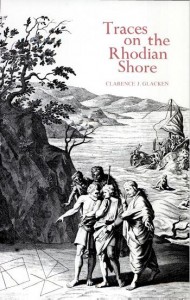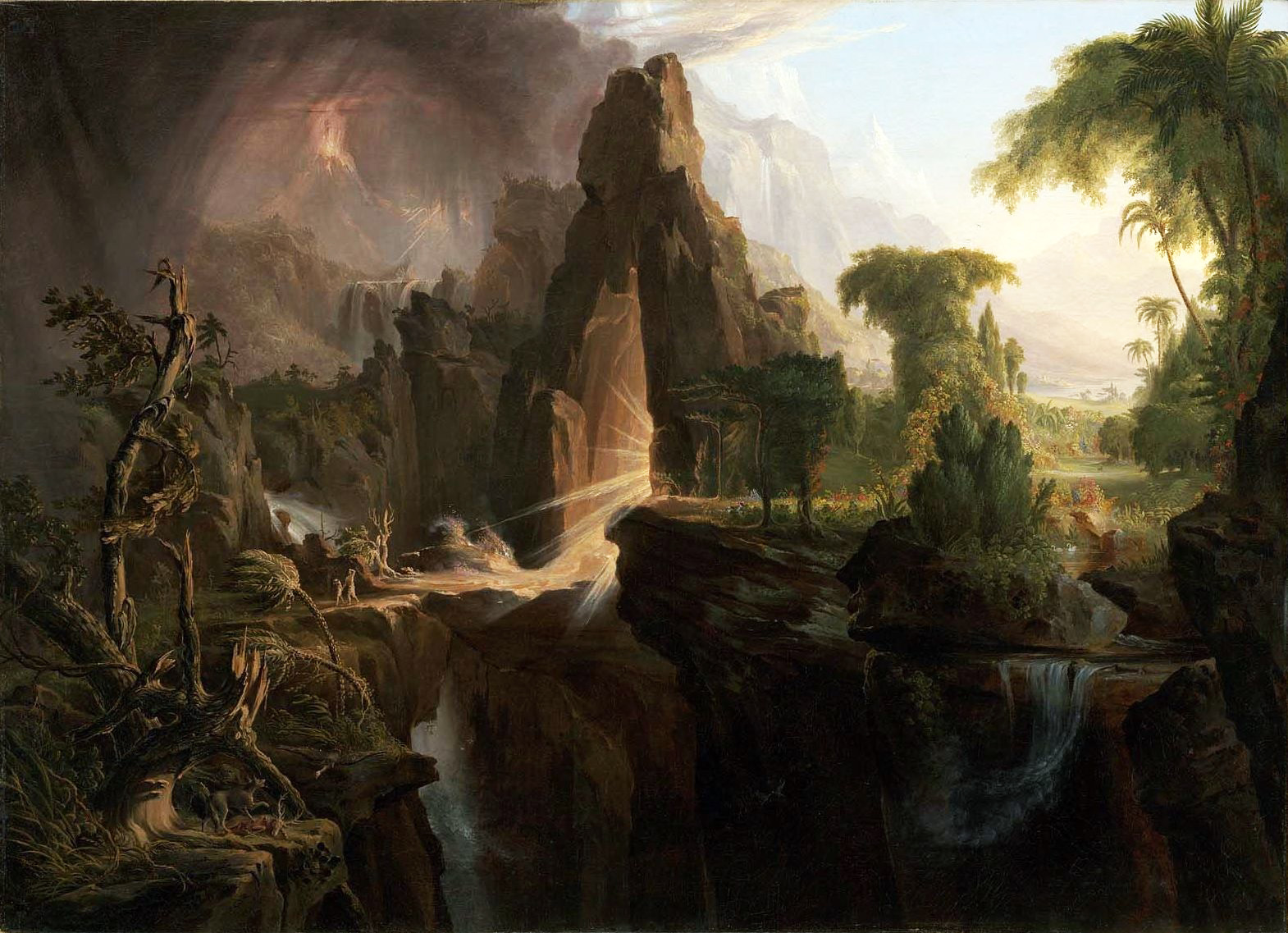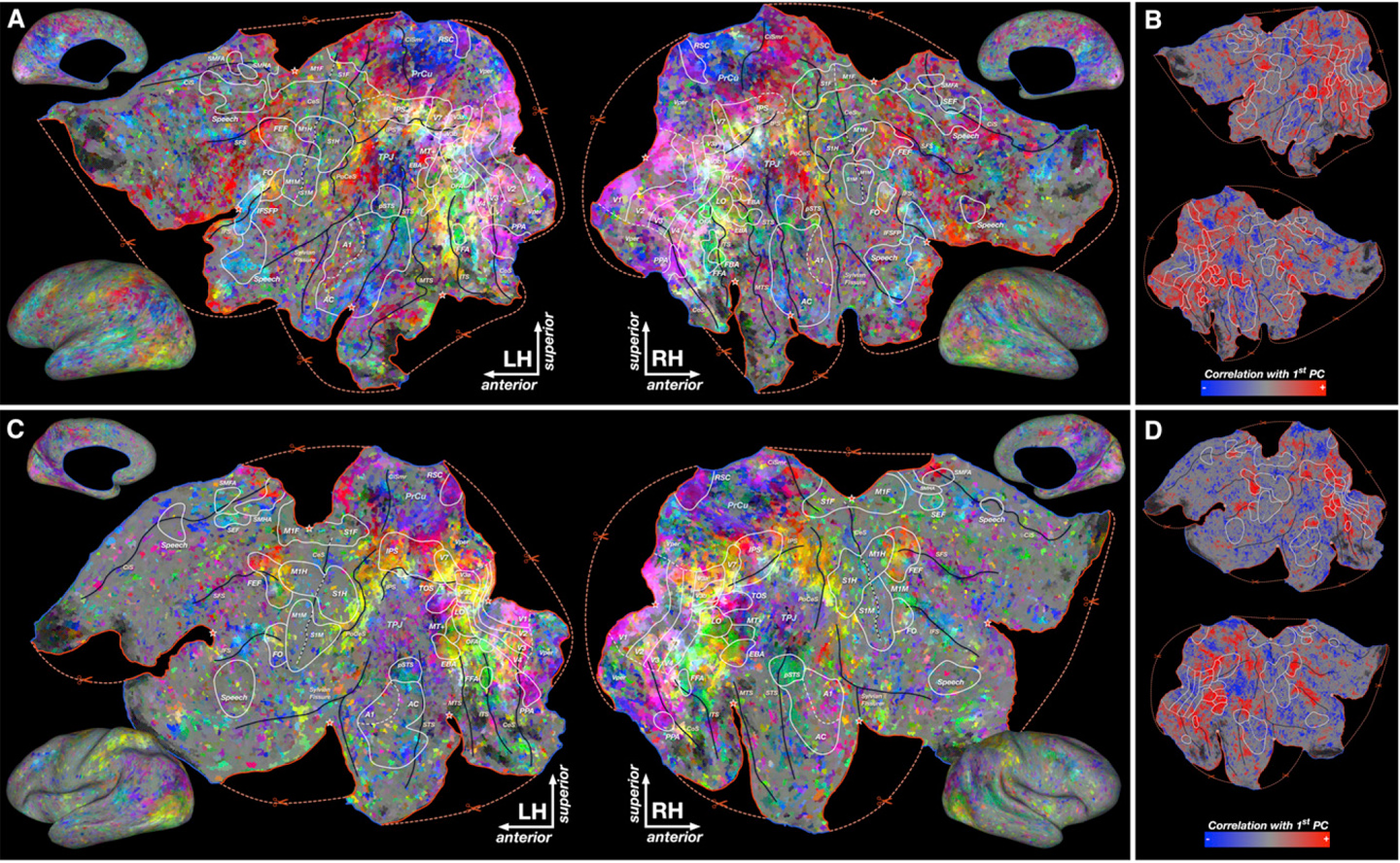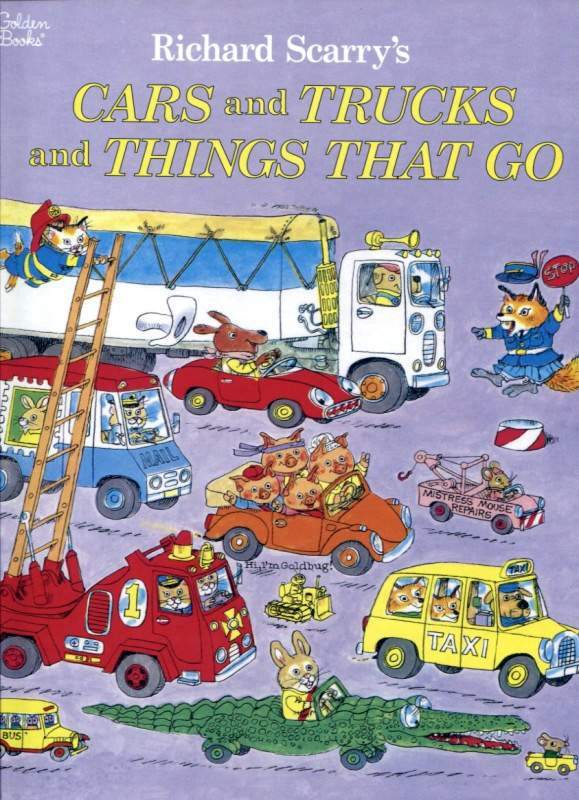The Neurobiology of Nature vs. Culture

What is nature and what is natural? Where do humans and their works fit into those categories? And how have the terms of these debates around nature and society changed over time?
These are foundational questions for a number of scholarly fields these days—geography, environmental history, anthropology, sociology, conservation biology, restoration ecology, philosophy, and so on—but they’re also far from new.
Enlightenment philosophers like Rousseau and Hobbes were preoccupied with somewhat similar questions and their implications for a functioning society. But reaching back to the Enlightenment only scratches the surface here. Clarence Glackens’s magnificent Traces on the Rhodian Shore follows these concerns all the way back to antiquity. The further one digs, it can sometimes seem like humanity’s relationship to nature is one of the oldest questions of all….

Semantic Space
So I was particularly struck when I saw a recent post up at Ed Yong’s Not Exactly Rocket Science blog for National Geographic. Yong writes about a neurobiology study at UC-Berkeley (Huth et al., 2012) that used fMRI scans to create a low-resolution map of the brain’s “semantic space.” The researchers charted, in Yong’s words, “the where of what,” the locations in the brain that were particularly active in response to images of buildings, animals, humans, faces, automobiles, plants, etc.. Yong is a far better science writer than I, so here’s his description of the paper:
“Huth made his maps by asking five volunteers to watch two hours of video clips. He later labelled the objects and actions in the clips using the 1,705 most common nouns and verbs from WordNet, a hierarchy of English words. As the volunteers watched, Huth used an fMRI scanner to measure the blood flow in 30,000 different sections of the brain. (Blood flow is an imperfect but widely used stand-in for brain activity.) The result: a giant matrix showing how all 30,000 points on the brain respond to all 1,705 categories.”

The maps produced by the study are strange, beautiful things that Huth et al. suggest are revealing of the ways our descriptive categories of things in the world (our “semantic categories”) depend on an interconnected, continuous physical space in the brain.
Which is to say, the many thousands upon thousands of objects in the world we can recognize are not represented in distinct regions of the brain. We don’t dedicate specific parcels of gray matter to every single object we’ve ever encountered. My brain hasn’t carved out picket-fenced real estate for each of, say, chocolate ice cream, bourbon, and Wallander (just to name a few winter indulgences here at Porous Places).
Instead, the brain organizes large swathes of “stuff” out there in the world along continuous conceptual gradients. Rapidly moving objects might all be represented more or less in one area of the brain while stationary objects might be more or less represented in another. The space between those two regions might be organized to represent things according to how much they move, hence: the “continuous semantic space” described in the paper.
Tobler’s First Law of… Brains
Now although that was the study’s primary conclusion, that’s not what got me interested in it in the first place. While the researchers showed that the brain doesn’t have a filing system based on a near-infinite slew of unique categories (a place for every thing and every thing in its place), that doesn’t mean there aren’t any categories involved whatsoever.
Huth et al. found that there’s a geography of similarity when it comes to where things get represented in the brain: like things got filed in like places (sort of like Tobler’s First Law of Geography). I already mentioned moving objects, but here are more examples: all wheeled things (cars, buses, bicycles, etc.) might be represented more in one area of the brain, while buildings and structures might crop up more in another, and animals in still yet another.

Their data suggested four main characteristics, or “dimensions,” by which visual stimuli were organized into this cerebral geography of similarity and difference: moving vs. stationary; social communication vs. everything else; “civilization” vs. “nature”; and biological vs. non-biological.
The Neurobiology of Nature vs. Culture
It’s that third continuum that grabbed my attention, a dimension that, in the authors’ words, “contrasts categories associated with civilization (people, man-made objects, and vehicles) with categories associated with nature (nonhuman animals)” (Huth et al. 2012, p. 1215). That is, images associated with human activity tended to provoke blood flow in one particular region of the brain, while images associated with “nature” induced blood flow to a distinctly different region.
Now, I should acknowledge there are a whole bunch of methodological reasons why we can’t just take these “dimensions”—in this case, the apparently neurobiological distinction between nature and society—at face value.
Methodological Interlude
The imaging technology, fMRI, has poor resolution (both visually and in terms of the time intervals between brain scans) and is prone to inconsistencies. Still more problematic is the fact that just because a machine detects blood flow to a particular region of the brain in response to visual stimulus, we don’t actually know what is going on in that part of the brain. Yes, fMRI imaging of blood flow gives us a proxy of brain activity, but one that is profoundly indirect. For example, if a test subject was shown a video of someone speaking, does the brain activity lighting up the scan signify a response to a mouth? A face? The act of talking? The concept of communication? All of the above? If all, then in what proportions? And so on.
Meanwhile, the WordNet library of 1705 words that Huth et al. used to label “stuff” depicted in the video clips offers its own source of bias, as does the labeling process itself. After all, can you imagine perfectly labeling and categorizing every possible thing appearing in 2 hours of video footage? Click to any random spot in Baraka, embedded below, watch just a minute of footage, and see how much there is to label and categorize in just a minute of moving pictures. And that’s aside from any preconceptions we bring to the material. Again, how do we know that brain blood flow observed in test subjects was actually in response to what the researchers categorized and labeled?
Finally, while statistical analysis yielded the four “dimensions” or qualities described in the paper, there’s good reason to be suspicious of that statistical analysis. If the labels and concepts fed into the model were biased in the first place, whether by the WordNet dictionary, the video content, the labeling process, or even the researchers themselves, then those statistical calculations will yield biased results.
Ok, now that that’s out of the way…. So what?
Nature vs. Culture, Reprise
Over the last two decades, one of the central themes in geography and environmental history (as well as numerous other fields in the humanities and social sciences) has been “hybridity.”
It’s a perspective that sees hard distinctions between nature and society/culture/humanity as not only deeply mistaken, but also profoundly destructive. From Donna Haraway and Bruno Latour, to William Cronon and Richard White, to Michael Pollan and Jenny Price (among countless others), writers and thinkers have been advocating ways of seeing the “cyborgs,” “monsters,” “organic machines,” and “gardens” that permeate our world.
Instead of pure nature or wilderness opposed to human civilization, these intellectuals argue that the two categories are thoroughly interconnected; if we simply take the time to look closely enough, we’ll find that nature and culture continuously bleed into one another (and always have).
Even our bodies (and what could be more human than our own biology?) are a thorough melding of wild nature and civilization. Just think about the complex ecosystems that make up the bacterial flora in your gut, or—if you dare—about the organisms that inhabit your urethra.
Likewise, we regularly forget that even the computer on which you’re reading this is thoroughly a part of nature, a forgetting that has significant consequences. In one of my favorite books about the complicated intertwining of nature and society, Jenny Price suggests that things like computers—along with pretty much anything in your field of vision right now—embody “the nature we lose track of.”[1. Jennifer Price, Flight Maps: Adventures With Nature in Modern America (NY: Basic Books, 1999), pg. 164. Also be sure to check out her fantastic two-part essay tackling similar ideas in The Believer: “Thirteen Ways of Seeing Nature in L.A.”] The rare-earth minerals that make up its hardware; the petroleum in its plastic keys; the hydrocarbons in its finishes; the (likely coal-powered) energy needed to cool data centers housing the thousands of servers that grant your web-surfing whims; the carbon footprint of it ALL, from mining to manufacture to transportation, and so on.

Follow even the most “unnatural” things that we humans produce in this world back to their source and you’d be hard-pressed not to see the ways nature permeates even our most urban and technologically dependent lives.
Moreover, following that trail of breadcrumbs usually forces us to confront the full environmental and human cost of our daily habits as producers and consumers. When we strive to see the nature entangled in society, we reveal not only the real transformations humans have wrought in the world, but also the labor and inequality that often underwrites such transformations.
Finally, I should say hybridity doesn’t have to be one big bummer. When we acknowledge that humans and society are endlessly entangled with the natural world, we also allow for the possibility of better ways of relating to all that nonhuman “stuff” out there. We might find surprises in our own backyards, embrace the staggering ecological potential of human-made places, or even come to better care for some of our most neglected social landscapes in ways that could dramatically improve the lives of both human and non-human beings.
So, hybridity (or the gardens/cyborg/organic machine/”the nature we lose track of”) offers a lot of potential and it’s no wonder that humanists and social scientists who care about the environment would advocate such a perspective.
But consistently remembering these things, regularly paying attention to the hybrids that make up our world is difficult enough for scholars embroiled in the all this commentary, let alone for the general public. Most lay people tend to think of nature as that capital “N” Nature found wherever humans are least present.

Hybridity, Social Values, and Cultural Neuroscience
Now, for as long as I’ve been exposed to these ideas, I’ve believed that this conceptual gulf people tend to carve out between nature and society, or between themselves and the environment, was completely learned. The separation was just a human invention (albeit, perhaps one with some very deep historical roots), and challenging that invention was simply a matter of popularizing some of these hybridity-type perspectives.

But Huth et al.’s study raises the possibility that the whole nature-vs.-culture problem isn’t just a matter of displacing old ideas. Maybe it’s also a matter of changing our brain tissue. Is it possible that such distinctions between nature and humanity have such a deep history, seem to be so stubbornly persistent, because they’re actually engrained in our biology? Could these ideas about nature be—shudder—natural?
So, I only say that to be provocative. As a humanist educated during the last decade of the twentieth century, I’m actually deeply suspicious of ideas and social conventions being branded as natural, and therefore immutable, correct, proper, etc.. All that popular evolutionary psychology stuff out there is just way too suspicious in the ways it tends to suggest some of our species’ most regressive and unjust social conventions—particularly when it comes to gender and race—are innately human.
And yet, notice how when I refuse to entertain the notion that ideas, cultural values, social constructions, etc. might have some grounding in nature, I’m just reproducing that same old nature/culture divide? This is where Huth et al.’s study got me really interested.
Let’s assume that their research was 100% correct in its findings: that its methodologies were unbiased and that there is in fact a biological basis for people’s distinguishing between nature and culture. That assumption about methodological perfection is, of course, ridiculous, but it’s useful.
Now, we could go the evolutionary-psych route and leap to the conclusion that the tendency for human brains to keep representations of “natural” things separate from “man-made” things is so fundamentally engrained in our biology that there’s no use changing it. We could argue that this is part of our evolutionary essence, hearkening back to some idealized existence on the African savannah in which those who could clearly separate human creation from the rest of the environment were at an advantage for survival.
Or, instead we could think about the ways learned cultural/social behaviors and values actually get entangled in our biology. When we’re raised by families and educated in schools that all together insist on distinguishing between nature and culture, well, all of that affects our brain chemistry, structure, and function. Our ideas about nature, while certainly a product of society and culture, might be rendered natural in certain ways by being integrated into the physiology of our minds. If that sounds like a stretch, then check out the growing field of cultural neuroscience (Tanya Marie Luhrmann’s piece on changing treatment paradigms around schizophrenia is also suggestive here).
Which isn’t to say that makes such ideas normative in any sense. Just because social values and learned behaviors might manifest physically in our brains’ geographies, that doesn’t mean such values have to be natural in any sense that justifies, normalizes, or makes such ideas a permanent, essential feature of humanity.
Rather, our ideas and values might be just as entangled with physical nature as our computers.

And of course, this raises all sorts of questions around the findings in Huth et al.’s research.
How would an environmental historian’s brain respond in such a study when the subject was shown something she knew unequivocally to be a thorough hybrid (something like the Salton Sea, perhaps).
Might Jenny Price’s brain, trained for many years to see the complicated ways nature and society are intertwined, look very different from those Huth et al. examined?
How might subjects from another society, one much less insistent on such nature-vs.-culture distinctions, respond to this study?
Or what might the natural/man-made semantic space Huth et al. found look like when studying the brains of Baining people of Papua New Guinea, a group so rigid in their distinctions between humans and non-humans that they forbid their children from play (something they believe to be solely an animal activity)?
So these questions around Huth et al. aside, let me pull back a little.
What do humanists and social scientists think about this? Might we understand culture, ideologies, etc. as being both socially constructed and “natural,” albeit not in any unchanging/essential way? Instead of wholly rejecting the notion that values have anything to do with nature (in this case our biology), can we accept some degree of hybridity here as well?
If Huth et al. AND the cultural neuroscientists are right, then surely together their work would suggest a lot for environmental historians, geographers, philosophers, etc. to talk about without necessarily conceding the uglier claims of evolutionary psychology (or of the countless others who’ve used both Darwin and “nature” to justify inequalities of race, class, gender, and sexuality).

1 Comment
Join the discussion and tell us your opinion.
[…] Places is, for the most part, a blog about watery landscapes. Some detours into neurobiology, epigenetics, animal friendships, and children’s literature aside, I usually manage to stay […]